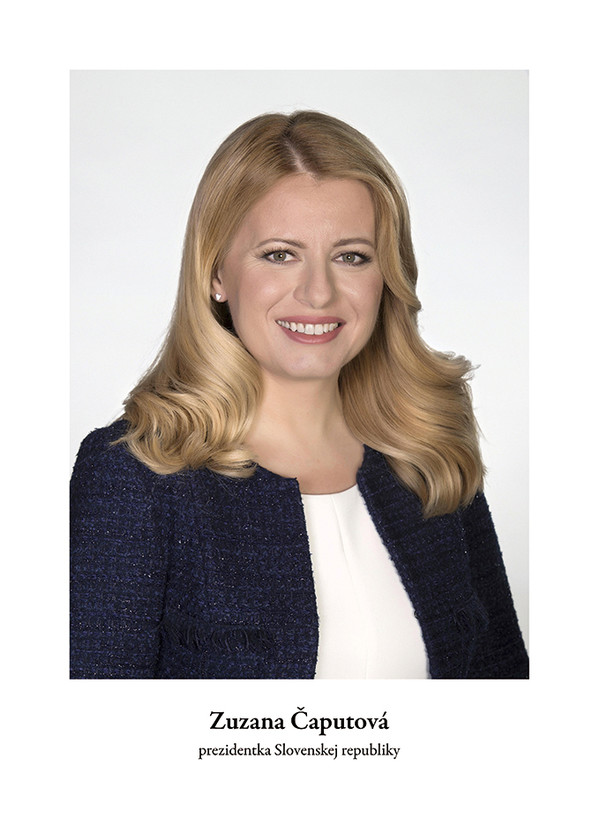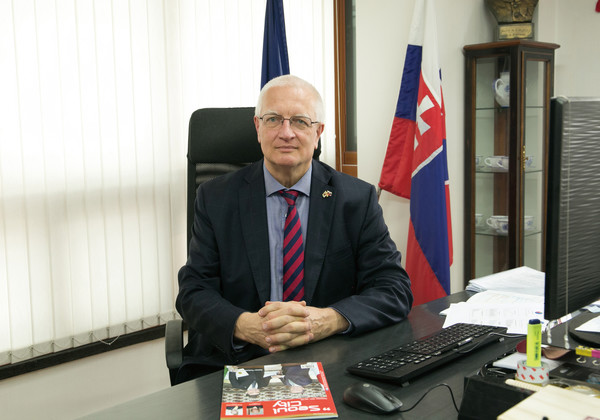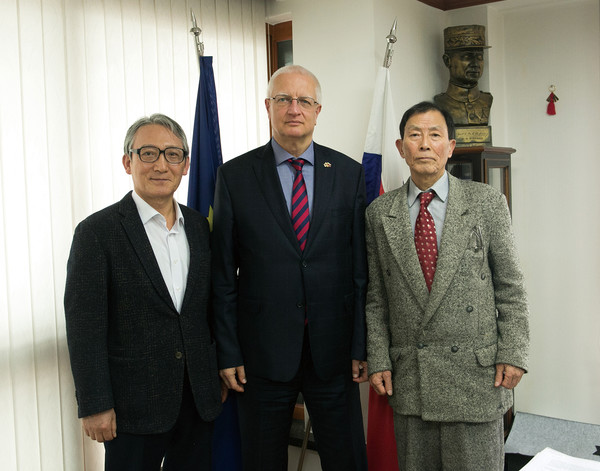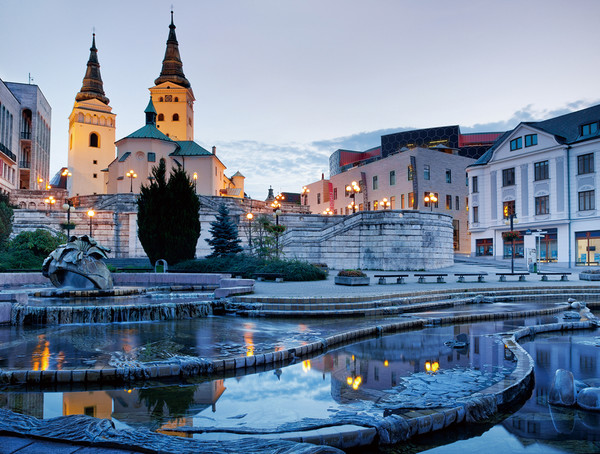
In commemoration of the Day of the Establishment of the Slovak Republic, the 'Seoul City' interviewed H.E. Jan Kuderjavy for the significance of the Day and his point of view on how to strengthen furthen the ties between Korea and Slovakia.
Q. Please introduce the significance of your National Day, the Day of the Establishment of the Slovak Republic, January 1st to our readers.
The Day of the Establishment of the Slovak Republic is celebrated on the 1st of January and marks the day in 1993 when Czechoslovakia split into two new entities - the Czech Republic and Slovakia.
The Slovak people had finally achieved national emancipation, but the struggle began from the activities of the “Štúr” generation, named after LudovítVelislavŠtúr (1815-1856), who was the leader of the Slovak national revival in the 19th century. The Slovak people’s efforts continued with the memorandum movement in 1861, through the political activities of Slovak representatives in multi-national Hungary, and with Slovaks’ political and cultural contributions to Czechoslovakia after its establishment in 1918. It was briefly split during World War 2, before coming under Soviet rule in 1948. In 1968, it became a federation consisting of the Czech Socialist Republic and the Slovak Socialist Republic. Communist rule in Czechoslovakia was brought to an end in 1989 as a result of the Velvet Revolution.
The end of communist rule 1989 opened the way for negotiations to establish a working federal state to replace what had originally been only a nominal federal state. With no agreement in sight, even after parliamentary elections in 1992, preparations began for dissolving Czechoslovakia into two separate states. On the 17th of July 1992, the Slovak National Council adopted the Declaration on the Sovereignty of the Slovak Republic and on the 1st of September 1992, it adopted the Constitution of the Slovak Republic. The two states, which had been part of Czechoslovakia since 1918, were to be officially separated on the 1st of January 1993.
The new Slovak Republic joined the community of independent democratic states and affirmed its intention to develop cooperation with them. The Slovak Republic joined the United Nations and the Council of Europe as it signed a European Association Agreement with the European Communities. Since then, the country has joined the Organisation for Economic Co-operation and Development in 2000, became a member of NATO in 2004 and the Slovak Republic was one of 10 nations who joined the European Union in 2004, becoming a euro-zone member in 2009. The Slovak Republic is currently one of Europe’s most rapidly developing countries.

Q. Please let us know the major issues discussed and agreed at the summit talks between Korean President, Moon Jae-in and Slovakian President, Andrej Kiska during latter's state visit to Seoul on April 10th, 2018.
Both leaders emphasized the high level of bilateral relations and mutually beneficial economic cooperation, the pillars of which are the large Korean investments in Slovakia (KIA,Samsung and abt. 100 Korean companies). They agreed to support further development of the economic dimension, while seeing potential in the areas of nuclear energy, infrastructural projects, know-how in the field of school reform and the start-up ecosystem. The Slovak side has expressed its interest in new investments with an emphasis on their high added value. In relation to the activities of the leading companies in Slovakia, they welcomed the measures of the Slovak Government aimed at addressing the shortage of work force, which creates additional space for their effective operation and reinvestment. The partners agreed to share experiences in tackling the current societal challenges that exist in both countries, such as unequal wealth redistribution, regional disparities, high youth unemployment and the challenges of the 4th Industrial Revolution. Both parties have expressed interest in cooperating in the fields of innovation and high tech. President Moon Jae-in appreciated the support of Slovakia, as well as the entire EU, of the policy of denuclearization of the Korean Peninsula.

Q. Please introduce prevailing industry and unique products of Slovakia.
The sector of the Machinery &Equipment Industry (MEI) in Slovakia represents one of the key pillars of the Slovak economy. It has a strong historical background and maintains its stable position in the Slovak industry. Before the year 1989, heavy and specialized engineering belonged to the key sectors of Slovak economy. Thanks to the successful transition into the market-oriented economy, massive development of the automotive industry and entry of strategic foreign investors, the sector has transformed into a modern and internationally recognized segment.
It is a sector of crucial importance, not only because of its contribution to the GDP and foreign trade balance, but also for its potential to create jobs and boost the overall employment. Slovakia has 924 active companies in MEI, the generated gross output is 40 billion €, share on the country's industrial production is 47%, total generated profit is 1,3 billion € and added value in the MEI is 6,1 billion €. Total employment in the sector exceeds 164 thousand jobs.
The Automotive industry has a strong tradition in Slovakia and became the most important sector and driving force of the Slovak economy. Over the past 20 years, it has been an important source of foreign direct investment as well as industrial innovation. Taking into consideration the number of inhabitants, Slovakia remains the world’s biggest car manufacturer with 182 cars produced per 1 000 people. After the record year of 2019, when about 1,1 million vehicles rolled off the production lines of Slovak carmakers, the coronavirus-instigated lockdown in 2020 reduced the production to 990 598 vehicles, down 10,6% in a year-on-year comparison. In 2021, the global shortage of chips, more than a drop in demand or the closed economy, stopped production lines several times. During the first half of 2021, car production exceeded 555 000 units.
The leading car producers in Slovakia are:
Volkswagen Slovakia(est. 1991) producing models Touareg, Volkswagen UP!,Audi Q7 & Q8, Porsche Cayenne,ŠkodaKaroq, Citigo and Seat Mii.
Stellantis Slovakia(former PSA Puegeot Citroën, est. 2003) with models Citroën C3 and Peugeot 208.
Kia Motors Slovakia (est. 2004) with wide variety of models: Kia Ceed SW, Kia XCeed, Kia Ceed GT, Kia ProCeed, Kia Sportage, Kia Ceed
Jaguar Land Rover (est. 2018) with models Land Rover Discovery and Land Rover Defender
The Electronics & Electrical Components Industry (EECI)is considered as one of the main pillars of Slovak economy, too. Current situation on the market reflects both-traditional electronics manufacturing (power generators, telephones, radios, etc.) and new trends especially connected to the growing automotive industry in Slovakia (electric motors, microelectronics, sensors). The EECI is one of the strongest contributors to the country's GDP, plays a significant role in the industrial output and is also one of the biggest employers in the country.
Along with dynamic car production, metalworking is on the rise as well-representing one of the most significant economic sectors. In Slovakia, 533 companies are active in a wide range of metalworking activities, usually performing combination of various processes. Share of the metalworking industry on the country’s industrial production is 5,5% and estimate of all workers employed in this sector is 28,5 thousand.
Other important industrial sectors are: Chemicals & Plastics Industry, Information & Communication Technology Industry, Shared Services & Business Process Outsourcing Centers, Aviation and Space Industry, Pharmaceutical & Life Sciences Industry, Food Processing Industry and Research & Development.
Slovakia is known also for the production of traditional and unique food products, fruits and herbal spirits and cut glass or crystal. Let me mention some of them:
SlovenskaBryndza is a typical Slovakian sheep cheese produced in the mountainous region in the country. The sheep on these pastures produce milk whose purity and taste results from their grazing in the summer season when they move to higher altitudes that prolong the period of grazing. The name “bryndza” has a Romanian origin. The bryndza is white and moist and it can sometimes resemble cottage cheese when made in granules. The taste is sour and salty and sometimes spices are added in the process of making. The bryndza is one of the main ingredients and flavor basis in our national dish - bryndzovehalusky (potato dumplings)
Herbal liquorsof the mountanious regions -some popular brands are Demänovka and Tatra Tea. Slovaks claim the herbs have health benefits such as boosting the immune system and aiding digestion, so taking a few swigs at the top of the mountain will make your time outdoors even more beneficial to your wellbeing.
Slovak cut glass and crystal- like previous products, the production of cut glass and crystal has a long tradition in Slovakia.

Q. What do you think would be the most attractive industrial sectors for Korean companies to invest in Slovakia?
Slovakia is determined to attract and support investments with high added value and innovation potential mainly in areas like electro mobility (batteries for electric vehicles), Industry 4.0, material research, nanotechnology industrial technology research (transport, mechanical & electrical engineering), environmental protection, biotechnology, sustainable energy and information & communication technologies and last but not least robotics and AI that can be among others most attractive to the Korean companies due to huge technological advantage Korea has gained in the past.
Slovakia prides itself as well on its industrial heritage which has provided a stable base for the development of certain industries such as automotive or engineering. Over the last decade, global corporations representing various industries have selected Slovakia as the top location for their expansion in the Central European region.
The automotive industry has a strong tradition; it has been the driving force of the Slovak economy and important source of foreign direct investment in the past 20 years. Moreover, Slovakia is well located within the European automotive production hub with over 1 million vehicles produced in 2019. Apart from the four operating carmakers, and we are proud to say that Kia Motor Slovakia is one of them, the Slovak automotive industry is also defined by its well developed and high quality supplier network. As KIA is well located within the European automotive production hub, Tier 1-2 suppliers can also benefit from a wider regional market.
Interesting information for Korean companies intending to enter European area can be the fact that Slovakia has very long tradition in the electronics and electrical components industry. It has become the second largest pillar of Slovak industry after automotive sector and the second strongest employer and exporter.
There is a number of other attractive sectors for Korean companies that would like to be visible on the European market with a huge export potential of almost 450 million, such as: E-mobility sector (electric cars, batteries to EV …), Semiconductors industry, Industry 4.0 such as robotics, mechanotronics and AI, Chemicals & Plastics Industry, Shared Services & Business Process Outsourcing Centers, Aviation and Space Industry, Pharmaceutical & Life Sciences Industry, Food Processing Industry and Agriculture.
Q. Please introduce outstanding Korean companies' activities in Slovakia.
South Korea is the largest Asian investor, and seventh largest overall investor in Slovakia. Foreign direct investment (FDI) from South Korea amounts to 2.8 billion € (as of 2019). This represents as much as 5% of the overall stock of FDI in Slovakia. The largest investors are Kia and Samsung, who established factories in Slovakia. Currently, there are over 100 Korean companies present in Slovakia, which provide more than 20 000 jobs.
Samsung made its first investment in Slovakia in the early 1990s and established a manufacturing plant in 2002. We consider Samsung Electronics in our country as a key player since 2002 and has an important role in the field of investments in Slovakia. Therefore, we confirm the continuing interest of the Slovak Republic in creating favourable conditions for further cultivation and expansion of Samsung in the future.
Kia Motor Slovakia (KMS) made its entrance to Slovakia and established a manufacturing plant near Žilina in 2004. Since the launch of production in December 2006 Kia invested in Slovakia 2,1billion€; the cumulative number of manufactured vehicles in KMS climbed to 3 870 400 and the number of engines to 5 599 844. At the beginning of 2020, Kia launched the mass production of the electrified XCeed plug-in hybrid model. The popular electrified models - CeedSportswagon PHEV and XCeed PHEV accounted for almost 8% of production, and mild hybrid versions of Sportage and Ceed models accounted for 12% of all produced vehicles. The most successful model of KMS plant in 2020 remained Kia Sportage with share in total production of 54%.
The year 2020 in Kia Motors Slovakia was marked by the progress in electrification of the models and continuous investments, especially into new generations of petrol engines. During four months, a long-term planned modification took place at Engine shop 2. The total investment was of more than 70 mil. €, and thanks to this investment, KMS have been able to produce new-generation of gasoline engines since the autumn of 2020.
Due to the COVID19 pandemic and its consequences, Kia had decreased the number of produced car compared to the original production target. In 2020, KMS produced 268 200 vehicles, a decrease by 22% compared to the record production in 2019. The number of produced power units reached 274 972. Almost half of the produced drive units were assembled into cars manufactured in Teplička nad Váhom. About 42% of the engines produced was exported to the affiliated plant of Hyundai Motor Manufacturing in Czechia. The remaining units were exported to other customers within the group.
Under the Plan S business strategy revealed last year, Kia has the ambitious goal of becoming a leader in the future mobility industry, offering new electric vehicles, services and even purpose-built vehicles (PBVs) for commercial users. It also wants to produce cars in a more sustainable manner, using clean energy and recyclable materials. KMS meets all the requirements to become a site for the production of fully electrified or even hydrogen models in the future.
Q. Please let us know your point of view on how to strengthen further the close economic and cultural ties between Slovakia and Korea in the years to come.
Besides manufacture, there is also potential of future investments in real estate as well as developing the tourism sector. Several Korean investors were looking into the possibility of making long-term property investments in Slovakia. The country also has the potential to attract at least 500 000 Korean tourists per year, who are visiting the Central European region. There are also opportunities for developing relations in the sphere of innovation and among start-ups. Slovak companies can also make investments in South Korea, though they may have trouble with market penetration, as Korean economy is dominated by chaebols who have control of the local market. Slovakia can also learn a lot from Korea in terms of governance, which has helped South Korea to achieve a high economic growth in the past.
Slovakia needs to invest in building up its own knowledge base on Korea which is a prerequisite in future development of mutual relations. Slovakia should liberalize its immigration policy in order to attract foreign workers. In the future, the two countries should focus more on quality of investment rather than its quantity. Innovations are the key for future of economic relations. Korean companies invest heavily into new technologies and green, sustainable solutions. Slovak start-ups have the opportunity to find their partners in South Korea in order to further develop their products.
In 2021 the government approved a document called the National Hydrogen Strategy, which states that Slovakia should use hydrogen as an energy source in all industries and areas of public life in which it is impossible or not cost-effective to directly engage electricity. The strategy envisions that hydrogen will be used mainly in the chemicals, petrochemicals, steel and heating industries as well as in transport andsince the Korean economy is also progressive in these areas, we see mutually beneficial penetrations there as well.
South Korea has been among the leading countries in industrial robot usage worldwide, with the industry also being officially supported and developed by the government. With the advent of Industry 4.0, the Slovak economy is also focused in this direction, which adds another huge dimension of cooperation between Korean and Slovak institutions, universities and companies, and last but not least, it will bring common benefits and progress to our countries.
While trade remains at the heart of our relationships, we would like our countries to grow in other areas as well, specifically in the promotion of culture, in the development of relations, in the field of science and technical or academic cooperation. More and more Slovak students are studying in the Republic of Korea and therefore it is necessary to promote our scholarship programs for Korean students. I am convinced that for young people, regardless of whether they are from Slovakia or South Korea, academic mobility is a great opportunity not only to get to know our countries, but above all to gain invaluable experience.which they can then use in practice.
Twinning is the next new project that is taking place on provincial level. We consider this type of cooperation a new way of developing joint activities to launch new/innovative/tailor-made projects in education, science and technology, smart solutions, culture, tourism, agriculture, green economy, trade industry 4.0, investments, etc. Slovakia welcomes the ongoing cooperation between the Korean provinces of Jeollabuk-do, Chungcheongnam-do and Gyeongsangbuk-do with Žilina, Trnava and Bratislava Self-Governing Regions. After finalizing mutual contact points and possible projects, Slovak party plans to invite delegations of Korean provinces (also in the presence of a business, culture, academy and science representatives) to the Slovak Republic to present our plans and options in more detail on the spot and strengthen interpersonal relations of all actors.

